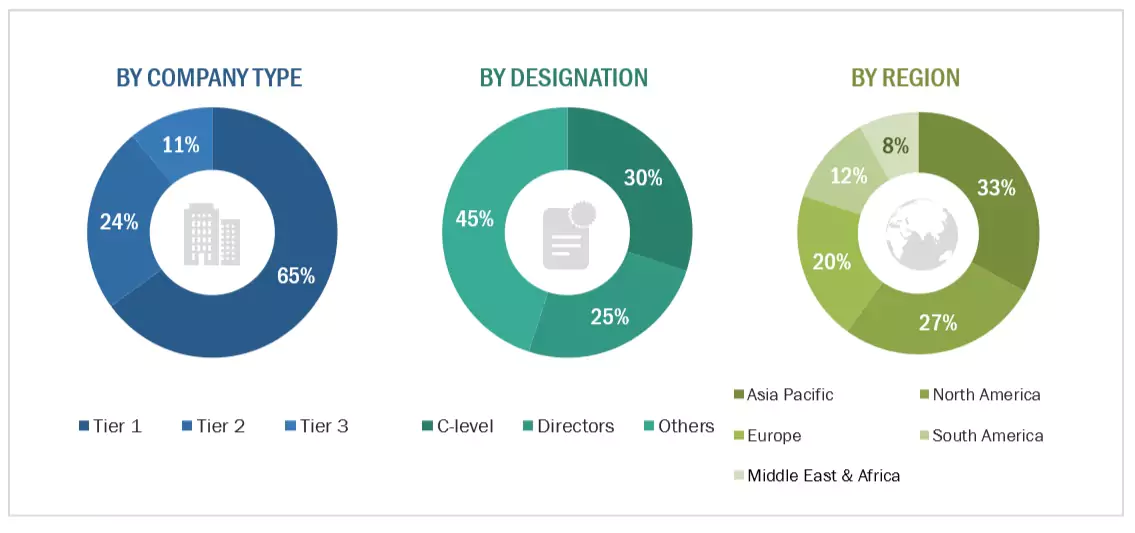The study involved major activities in estimating the current size of the geothermal energy market. Exhaustive secondary research was done to collect information on the peer and parent markets. The next step was to validate these findings, assumptions, and sizing with industry experts across the value chain through primary research. Both top-down and bottom-up approaches were employed to estimate the complete market size. Thereafter, market breakdown and data triangulation were used to estimate the market size of the segments and subsegments.
Secondary Research
This research study on the geothermal energy market involved the use of extensive secondary sources, directories, and databases, such as Hoovers, Bloomberg, Businessweek, IEA Geothermal, International Energy Agency, and BP Statistical Review of World Energy, to identify and collect information useful for a technical, market-oriented, and commercial study of the market. The other secondary sources included annual reports, press releases & investor presentations of companies, white papers, certified publications, articles by recognized authors, manufacturer associations, trade directories, and databases.
Primary Research
The geothermal energy market comprises several stakeholders such as power plant manufacturers, ground source heat pump manufacturers, manufacturing technology providers, and technical support providers in the supply chain. The demand side of this market is characterized by the rising demand for geothermal energy in power generation, residential heat & cooling, commercial heat & cooling, and other applications. The supply side is characterized by rising demand for contracts from the industrial sector and mergers & acquisitions among big players. Various primary sources from both the supply and demand sides of the market were interviewed to obtain qualitative and quantitative information. Following is the breakdown of primary respondents:

Note: Others include product engineers and product specialists. The tier of the companies is defined on the basis of their total revenue as of 2021: Tier 1 = > USD 1 billion, Tier 2 =
From USD 500 million to USD 1 billion, and Tier 3 = < USD 500 million.
To know about the assumptions considered for the study, download the pdf brochure
Market Size Estimation
Both top-down and bottom-up approaches were used to estimate and validate the total size of the geothermal energy market. These methods were also used extensively to estimate the size of various subsegments in the market. The research methodology used to estimate the market size includes the following:
Geothermal Energy Market : Top-Down and Bottom-Up Approach
Data Triangulation
After arriving at the overall market size from the above estimation process, the total market has been split into several segments and subsegments. Data triangulation and market breakdown processes have been employed to complete the overall market engineering process and arrive at the exact statistics for all the segments and sub-segments, wherever applicable. The data has been triangulated by studying various factors and trends from both the demand and supply sides. Along with this, the market has been validated using both the top-down and bottom-up approaches.
Market Definition
Geothermal energy is renewable energy that is harnessed from the heat inside the Earth. Water and/or steam carry the geothermal energy to the Earth's surface. Depending on its characteristics, geothermal energy can be used for heating and cooling purposes, be harnessed to generate clean electricity, or be used directly for heating. Geothermal electricity generation relies mainly on technologies, such as steam plants, flash plants (single, double, and triple), binary plants, and combined cycle or hybrid plants, that exploit conventional geothermal resources. However, as high-quality conventional resources become harder to access, deeper resources may become accessible in the future through the development of enhanced geothermal systems. Heat energy can also be stored in the ground, such as in borehole energy storage or aquifer energy storage systems, for later retrieval and use. Another major utilization of geothermal heat is its direct use in space heating, aquaculture, horticulture, swimming pools, and spa treatments. Ground source/geothermal heat pumps use the Earth's shallow ground temperature for heating and cooling, whereas direct-use systems produce heat directly from hot water within the Earth.
Stakeholders
-
Government & research organizations
-
Institutional investors and investment banks
-
Investors/shareholders
-
Environmental research institutes
-
Consulting companies in the energy & power sector
-
Raw materials and component manufacturers
-
Geothermal energy systems manufacturers' associations
-
Energy efficiency consultancies
-
Engineering, procurement, and construction (EPC) contractors
-
Standardization and testing firms
-
Power plant operators/owners
-
District heating plant operators/owners
-
Residential end users and real estate companies
-
Commercial end users
Report Objectives
-
To define, describe, segment, and forecast the geothermal energy market on the basis of technology, temperature, application, and region
-
To provide detailed information on the major factors influencing the growth of the market (drivers, restraints, opportunities, and challenges)
-
To strategically analyze the market with respect to individual growth trends, future expansions, and the contribution of each segment to the market
-
To analyze market opportunities for stakeholders and details of the competitive landscape for market leaders
-
To forecast the growth of the market with respect to the main regions (Asia Pacific, Europe, North America, South America, and Middle East & Africa)
-
To strategically profile key players and comprehensively analyze their market rankings and core competencies
-
To track and analyze competitive developments in the market, such as contracts & agreements, investments & expansions, new product developments, and mergers & acquisitions
Available Customizations
MarketsandMarkets offers customizations according to the specific needs of the companies with the given market data.
The following customization options are available for the report:
Product Analysis
-
Product matrix, which gives a detailed comparison of the product portfolio of each company
Geographic Analysis as per Feasibility
-
Further breakdown of the geothermal energy market, by country
Company Information
-
Detailed analysis and profiling of additional market players (up to five)



Growth opportunities and latent adjacency in Geothermal Energy Market